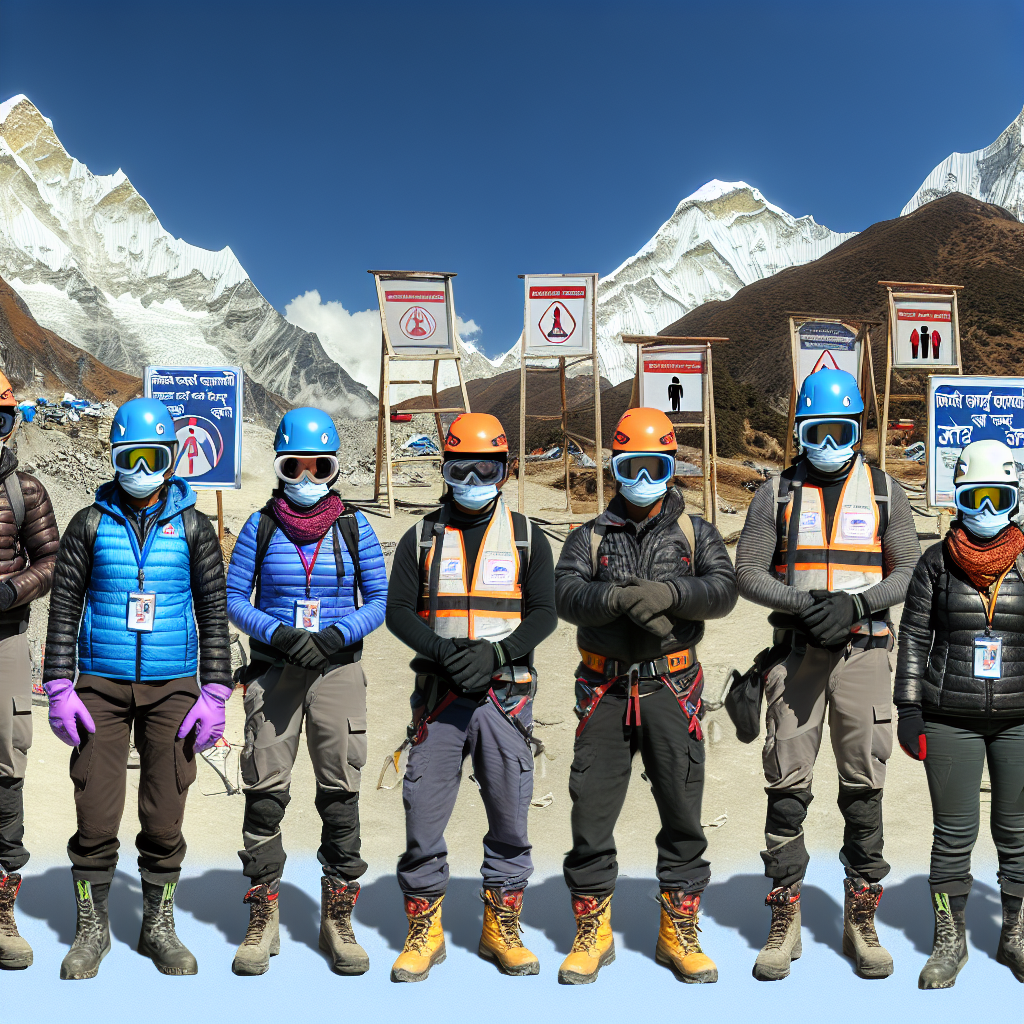Nepal’s Mountain Tourism Sector Unveils New Safety Standards for High-Altitude Experiences
Nepal, home to the majestic Himalayas and the world’s highest peak, Mount Everest, has long been a magnet for adventure seekers and mountaineers. The country’s mountain tourism sector is a vital part of its economy, attracting thousands of tourists annually. However, the inherent risks of high-altitude trekking and climbing have prompted authorities and industry stakeholders to introduce new safety standards aimed at protecting visitors and enhancing the overall experience.
Rising Popularity and the Need for Enhanced Safety
Over the past decade, Nepal has witnessed a significant surge in mountain tourism. According to the Nepal Tourism Board, over 1.2 million tourists visited Nepal in 2023, with approximately 150,000 engaging in trekking and mountaineering activities. This increase has brought economic benefits but also highlighted safety concerns, including altitude sickness, accidents, and inadequate preparedness among tourists.
In response, the Nepalese government, in collaboration with trekking agencies, mountaineering associations, and international partners, has unveiled a comprehensive set of safety standards designed to mitigate risks and promote responsible tourism.
Key Components of the New Safety Standards
The newly introduced safety standards focus on several critical areas to ensure the well-being of tourists and the sustainability of mountain tourism:
- Mandatory Health Checks and Acclimatization Protocols: Tourists are now required to undergo pre-trek health screenings and follow strict acclimatization schedules to prevent altitude sickness.
- Certified Guide and Porter Training: All guides and porters must complete certified training programs emphasizing first aid, emergency response, and environmental conservation.
- Improved Communication Infrastructure: Installation of satellite phones and emergency communication devices along popular trekking routes to facilitate timely rescue operations.
- Environmental and Waste Management Guidelines: Strict rules on waste disposal and eco-friendly practices to preserve the fragile mountain ecosystem.
- Insurance and Emergency Evacuation Plans: Mandatory travel insurance covering high-altitude trekking and clear evacuation protocols in case of emergencies.
Case Study: Everest Base Camp Trek Safety Enhancements
The Everest Base Camp (EBC) trek, one of the most popular high-altitude routes, has been a focal point for implementing these new standards. In 2023, the Nepal Mountaineering Association (NMA) partnered with international NGOs to pilot a safety program on the EBC trail.
This program included:
- Regular health check-ups at key points along the trek.
- Deployment of trained medical personnel equipped with portable oxygen and first aid kits.
- Installation of solar-powered communication hubs for emergency contact.
As a result, the incidence of altitude-related illnesses decreased by 20% compared to previous years, and rescue response times improved by 30%, according to NMA reports.
Benefits for Tourists and the Local Economy
These safety standards not only protect tourists but also bolster Nepal’s reputation as a responsible and secure destination for mountain adventures. Enhanced safety measures encourage more visitors, including families and older trekkers, to explore high-altitude routes with confidence.
Moreover, the training and certification programs for guides and porters improve local employment quality and ensure that communities benefit sustainably from tourism. The emphasis on environmental conservation also helps maintain the pristine beauty of Nepal’s mountains, which is crucial for long-term tourism viability.
Challenges and Future Directions
Despite these positive developments, challenges remain. Implementing safety standards across remote and less frequented trails requires significant resources and coordination. Additionally, educating tourists about the importance of compliance is an ongoing effort.
Looking ahead, Nepal aims to integrate technology further, such as drone-assisted rescues and real-time weather monitoring, to enhance safety. The government is also exploring partnerships with international mountaineering bodies to standardize safety protocols globally.
Conclusion
Nepal’s unveiling of new safety standards for high-altitude mountain tourism marks a pivotal step toward safeguarding visitors and preserving the country’s natural heritage. By focusing on health protocols, guide training, communication infrastructure, and environmental stewardship, Nepal is setting a benchmark for responsible adventure tourism.
These initiatives not only reduce risks but also enhance the overall trekking and climbing experience, ensuring that Nepal remains a premier destination for mountain enthusiasts worldwide. As the sector evolves, continued collaboration between government agencies, local communities, and international partners will be essential to sustain these gains and promote safe, enjoyable, and eco-friendly mountain tourism.





